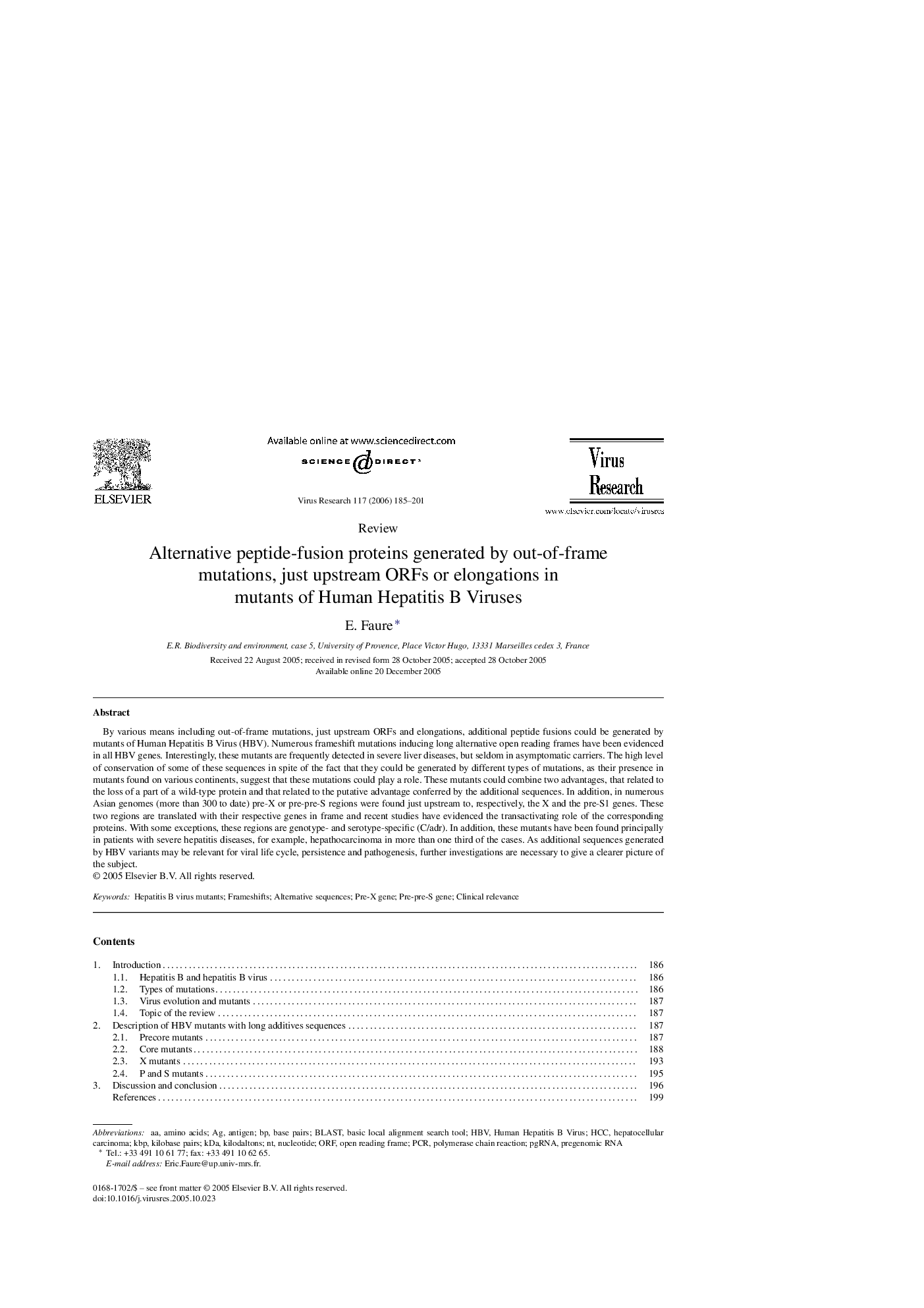| Article ID | Journal | Published Year | Pages | File Type |
|---|---|---|---|---|
| 3431305 | Virus Research | 2006 | 17 Pages |
By various means including out-of-frame mutations, just upstream ORFs and elongations, additional peptide fusions could be generated by mutants of Human Hepatitis B Virus (HBV). Numerous frameshift mutations inducing long alternative open reading frames have been evidenced in all HBV genes. Interestingly, these mutants are frequently detected in severe liver diseases, but seldom in asymptomatic carriers. The high level of conservation of some of these sequences in spite of the fact that they could be generated by different types of mutations, as their presence in mutants found on various continents, suggest that these mutations could play a role. These mutants could combine two advantages, that related to the loss of a part of a wild-type protein and that related to the putative advantage conferred by the additional sequences. In addition, in numerous Asian genomes (more than 300 to date) pre-X or pre-pre-S regions were found just upstream to, respectively, the X and the pre-S1 genes. These two regions are translated with their respective genes in frame and recent studies have evidenced the transactivating role of the corresponding proteins. With some exceptions, these regions are genotype- and serotype-specific (C/adr). In addition, these mutants have been found principally in patients with severe hepatitis diseases, for example, hepathocarcinoma in more than one third of the cases. As additional sequences generated by HBV variants may be relevant for viral life cycle, persistence and pathogenesis, further investigations are necessary to give a clearer picture of the subject.
